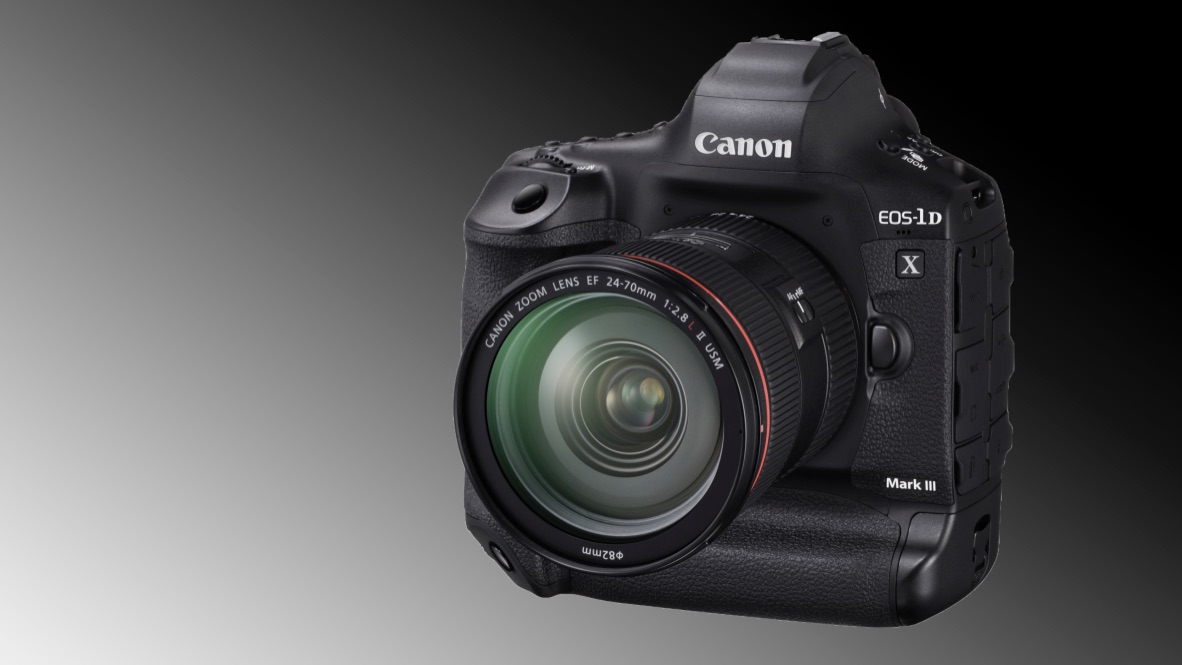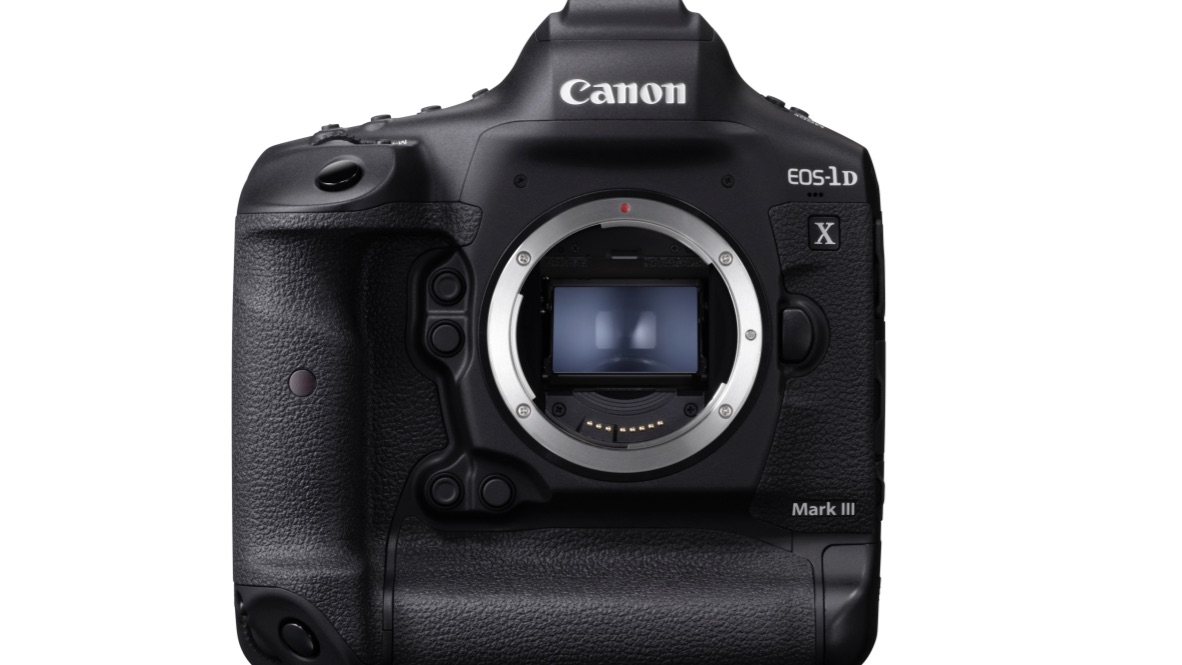Canon EOS 1D X Mark III: what we know so far about the flagship sports DSLR
Back in 2011, with a launch price of $6,799, the original Canon EOS 1D X was focused directly at the professional sports photographer. This full-frame DSLR housed an 18.1MP sensor, dual Digic 5+ processors, a 61-point autofocus (AF) system and a decent 14fps burst speed.
At that time, it was a pretty impressive snapper, although five years later the EOS 1D X Mark II outdid the older camera's performance, thanks to a pair of Digic 6+ engines working alongside a 20.2MP full-frame CMOS sensor.
Fast forward to 2019 and Canon has officially let the cat out of the bag, letting the world know that its next pro-specced sports DSLR is in the pipeline. What wasn't revealed is when we can expect the new snapper, but the probability is very high that we will see it in the hands of photojournalists at the upcoming 2020 Tokyo Olympics.
The EOS 1D X Mark III will not be the only new pro-level camera for sports photographers next year. From what Canon has already revealed of the third-gen Canon 1D X, it will likely give the Nikon D6 stiff competition.
- Camera rumors 2019: the biggest and best camera rumors around
- Best beginner DSLR cameras in 2019: 5 budget models to choose from
- The best DSLRs in the business: 10 top cameras to suit every budget

The Canon EOS 1D X Mark III
Canon 1D X Mark III: release date and pricing
When the original EOS 1D X launched in 2011, it was an expensive camera, even for the professionals. Thankfully the EOS 1D X Mark II came with a slightly lower price tag of $5,999 / AU$7,999 and it's possible to get the camera body for less than that now.
That just goes to show that the EOS 1D X Mark III is not going to be cheap. We're expecting it to come in at about the same price as its immediate predecessor, if not more.
As for when you can expect it, there have been reports from way back in March that the Mark III was being field tested but no launch date was mentioned. Later it was predicted that the refreshed 1D X could arrive in 2020, although a more recent rumor indicates a more precise February 2020 announcement.
That does seem quite plausible as it matches the release date of the EOS 1D X Mark II, which was announced on February 1, 2016, just months before the Olympics in that year.
Canon EOS 1D X Mark III: design
The EOS 1D X line has a very chunky design, yet they are comfortable to use for most people. And Canon seems to have kept to that same design aesthetic for the Mark III model, with the upcoming camera strongly resembling its immediate predecessor.
The big brute that is the Mark II has a magnesium alloy build and weather sealing that it brought over from the original 1D X, but it did debut a double grip on the body – both vertical and horizontal.
The vertical grip on the Mark II has its own set of control buttons, making it easy to shoot in portrait orientation. The second generation model, despite its size, was easy to handle, thanks to some minor design tweaks, and the same design ideas have been carried over to the Mark III.
Canon hasn't revealed much else about the Mark III's design, but some of the rear control buttons will be backlit, while rumors have previously implied that the rear LCD display will be a 3.15-inch tilt-angle touchscreen.

The EOS 1D X Mark III
Canon EOS 1D X Mark III: sensor and processor
The Mark II upped the pixel count from the first generation camera from 18.1MP to 20.2MP. You'd be forgiven for thinking that's a rather low sensor resolution for a camera of its caliber, but the 1D X line was built for speed and low-light shooting.
Having fewer pixels on a sensor means each photoreceptor is larger and, therefore, able to capture more light. That, in turn, results in less noisy results as the image signal requires less amplification as compared to a higher resolution sensor of the same size.
While Canon hasn't mentioned anything about the pixel count in the Mark III, rumors suggest it's going to be a 28.1MP full-frame CMOS sensor. All we know for sure is that it;s a brand-new sensor accompanied by a new processor as well.
Keeping the tradition of dual processors alive, the Mark III is said to debut a brand-new imaging engine, with dual Digic 9 processors under the hood. If this rumor is true, it will be the first time a 1D X camera has debuted a new processor, and it will be the power of the two Digic 9 engines that will push the speed and performance of the Mark III above and beyond what the previous model can currently achieve.
Canon EOS 1D X Mark III: in-body image stabilization (IBIS)
An anonymous source had previously told Canon Rumors that the EOS 1D X Mark III will feature IBIS, which could be true as Canon has patented IBIS modules for both DSLRs and full-frame mirrorless cameras.
So far, IBIS has been a feature of mirrorless cameras, although Canon has traditionally shied away from it for all its snappers, DSLR and mirrorless alike. If the addition of IBIS is true, then shooting handheld, particularly in low light, will be a breeze and will likely please many users.
Canon EOS 1D X Mark III: continuous shooting / burst speed
Where the original 1D X and the Mark II version topped out at 14fps when shooting continuously, the Mark III model was, at one point, rumored to be able to shoot at a maximum of 30fps. Canon has laid that rumor to rest, confirming that the Mark III will top out at 20fps with the electronic or the physical shutter, taking it a notch higher than Sony's new Alpha A9 II, which has a burst speed of 20fps when using the electronic shutter and 10fps mechanical.
However, to save images being shot continuously as these speeds will require a camera with a high buffer depth. Currently, the 1D X Mark II is able to record an unlimited number of JPEGs and up to 170 RAW files, but Canon has promised that the buffer depth in the Mark III is "five times" that of its predecessor.

The current EOS 1D X Mark II
Canon EOS 1D X Mark III: autofocus
Autofocus is where the Mark III is likely to outshine its predecessor in the real world. Not only has Canon upped the number of selectable AF points from 61 to 525, there's also going to be the additional of a deep learning algorithm to improve AF speed and accuracy. This kind of technology has been utilized by Panasonic for its Depth by Defocus system and by Sony (although here it's called AI). For Canon, though, this is a first and will need testing before we decide if it can match Sony's superb AF performance.
Of course, the 525 AF points, Canon says, will cover 100% of the vertical frame and 90% of the horizontal frame.
Canon EOS 1D X Mark III: stills and video specs
We know there's a new processor being developed for the EOS 1D X Mark III which, Canon has revealed, will enable the forthcoming camera to shoot 10-bit HEIF (High Efficiency Image File) images which offer better color reproduction and higher dynamic range than regular JPEG files.
Canon has also confirmed that the new camera will be capable of 4K video at 60fps with 10-bit 4:2:2 Canon Log (CLog) internal recording.
Canon EOS 1D X Mark III: card slots and connectivity
The EOS 1D X II has one CFast memory card slot and one regular CompactFlash slot. With CompactFlash now an outdated technology, we were quite sure that wasn't going to make its way to the Mark III.
Canon has confirmed that there will be dual CFExpress card slots in the Mark III, which will be capable of handling the camera's superb buffer depth.
It's also been revealed that Canon is developing the next generation wireless transmitter (WFT-E9) capable of doubling the wireless data transmission speeds as compared tot he WFT-E8. This will allows users to transfer image files via Wi-Fi or Bluetooth to other devices quicker.
The camera will also be GPS-enabled if location data needs to saved to files. Whether there's a USB-C port, though, remains to be seen.
Contributer : Techradar - All the latest technology news https://ift.tt/2qCmcHy

 Reviewed by mimisabreena
on
Tuesday, October 29, 2019
Rating:
Reviewed by mimisabreena
on
Tuesday, October 29, 2019
Rating:















No comments:
Post a Comment